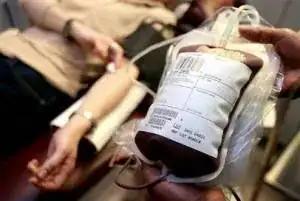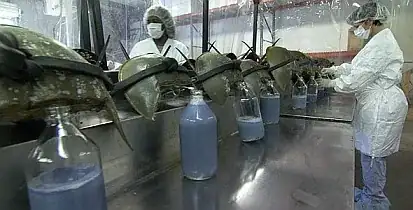I have encountered many people in my life that believe that your blood is blue until it hits the air and only then it turns red. The blue color of our veins is also explained the same way, as the deoxygenated blood in the veins is claimed to be blue.
See for example:
When blood gives up oxygen to the different parts of the body, it becomes blue. The veins take blood back to the heart and lungs. They are near the surface of the skin, so you can see them.
Source(s):
I am a medical doctor.
Is the color of human blood ever blue, and if it is not, why are our veins blue? Does the presence of oxygen change the color of blood?

